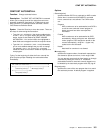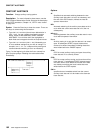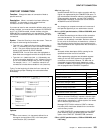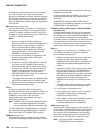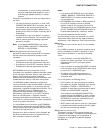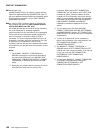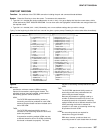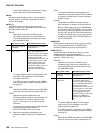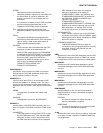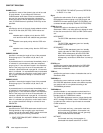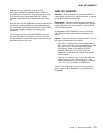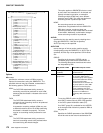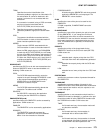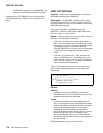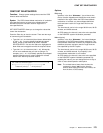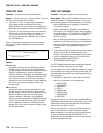CEMT SET DB2CONN
CTERM
Specifies the terminal identification (four
characters padded to eight) as an authorization ID.
An authorization ID cannot be obtained in this
manner if a terminal is not connected with the
transaction.
If a transaction is started (using a CICS command)
and has no terminal associated with it, the
COMAUTHTYPE(TERM) should not be used.
CTX Specifies the transaction identification (four
characters padded to eight) as the authorization
ID.
COPID
The operator identification associated with the
userid that is associated with the CICS transaction
sign-on facility is used as the authorization ID
(three characters padded to eight).
CUSERID
The 8-character userid associated with the CICS
transaction is used as the authorization ID.
When the DB2 sample sign-on exit DSN3@SGN
is used with AUTHTYPE(USERID), the exit sends
the USERID to DB2 as the primary authorization
ID and the RACF group ID to DB2 as the
secondary ID. When the sample sign-on exit is
used, there is no difference between
COMAUTHTYPE(CUSERID) and
COMAUTHTYPE(CGROUP).
COMTHREADLim
specifies the current maximum number of command
threads that the CICS DB2 attachment allows active
before requests overflow to the pool.
CONNECTError
returns a value when CICS is not connected to DB2
because the adapter is in 'standby mode'. The value
shows how this information is to be passed back to an
application that has issued a SQL request. CVDA values
are:
ABEND
The application is abended with abend code
AEY9.
SQLCODE
The application receives a -923 SQLCODE.
CONNECTst
sets the status of the CICS DB2 connection; that is, to
start or to stop the CICS DB2 connection. CVDA values
are:
CONNECTED
This is equivalent to issuing DSNC STRT to start
the CICS DB2 attachment. If the requested DB2
subsystem is active, control returns when CICS
and DB2 have been connected. If the requested
DB2 subsystem is not active, the response
returned is dependant on the setting of
STANDBYMODE: If DB2 is not initialized, and
STANDBYMODE(NOCONNECT) is specified on
the DB2CONN, INVREQ and RESP2=39 is
returned. If you specify
STANDBYMODE(CONNECT) or
STANDBYMODE(RECONNECT), NORMAL with
RESP2=38 is returned indicating that the CICS
DB2 attachment is in standby mode and will
connect to DB2 as soon as it becomes active.
NOTCONNECTED
| CEMT initiates a quiesce stop of the CICS DB2
| connection and implicitly uses the NOWAIT option,
| meaning that control returns immediately to CEMT
| before the quiesce is complete.
FORCENOTCONNECTED
FORCENOTCONNECTED force stops the
connection by force purging transactions currently
using DB2. Control is not returned until the
connection is stopped.
DB2Id
specifies the name of the DB2 subsystem that the CICS
DB2 attachment should connect to. DB2ID can only be
changed when CICS is not connected to a DB2 system.
MSGQUEUE1
specifies the first transient data destination to which
unsolicited messages from the CICS DB2 attachment
are sent.
MSGQUEUE2
specifies the second transient data destination to which
unsolicited messages from the CICS DB2 attachment
are sent.
MSGQUEUE3
specifies the third transient data destination to which
unsolicited messages from the CICS DB2 attachment
are sent.
NONTERMREL
specifies whether or not non-terminal transactions
release threads for reuse at intermediate syncpoints.
CVDA values are:
RELEASE
non-terminal transactions release threads for
reuse at intermediate syncpoints.
NORELEASE
non-terminal transactions do not release threads
for reuse at intermediate syncpoints.
PLAN
specifies the name of the plan to be used for all threads
in the pool. If PLAN is specified, PLANEXITNAME may
not be specified.
Chapter 11. Master terminal CEMT 169



